Device information is very important for a developer in order to know the types of devices that users are using. To give a better user experience, we need this information. It can also be used to trace the crashes in apps. There’s a lot of device information available to the developer, and there are limitless uses for that info.
In this post, we’ll learn to get various device information in a React Native app. We’ll use the extremely easy-to-use package react-native-device-info for obtaining this information. You can learn more about this package on its GitHub page.
In order to follow along, readers should have basic knowledge of JavaScript, React, and React Native. We’ll also be using Waldo’s no-code testing tool to test our application.
Basic Setup
To start, we’ll use the React Native CLI to create a new React Native app. We’re using the React Native CLI because the react-native-device-info package we’ll need isn’t available in the Expo CLI. The Expo CLI is easier to set up and beginner-friendly, but lots of advanced packages are available only in the React Native CLI.
There are many setups with environment variables and Android Studio for the React Native CLI. The React Native documents on environment setup give a detailed explanation of this.
After the setup, we’ll create a new React Native project. Navigate to any directory and use the command below to create a new project. Give the project any name. I’ll name mine RNdeviceInfo.
We’ll get the below screen once the installation is completed successfully.

Starting Our React Native Project
Before starting the project, open Android Studio and click on “Configure.” It will open a pop-up in which you’ll click on “AVD Manager.”

The connected virtual devices configured earlier will be shown. Click on the green play button next to any device.
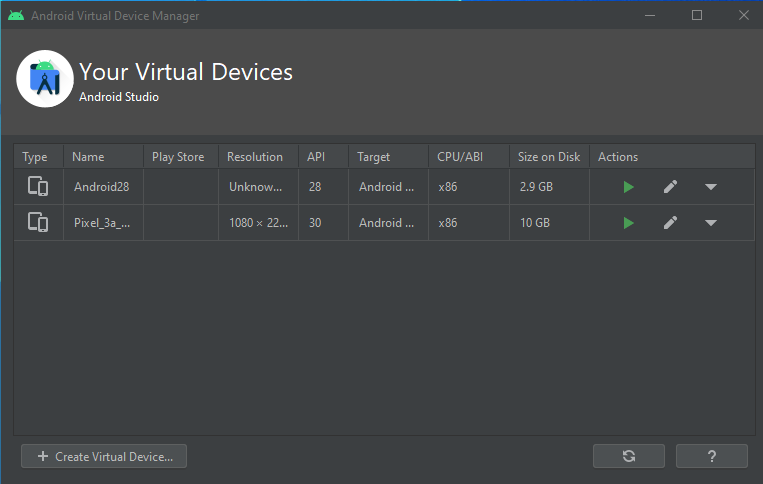
Now, we’ll start our React Native project by first navigating to the directory and running the npx react-native run-android command.

It will show that the build is successful in the same terminal. And another terminal will open for the React Native CLI. We’ll also get the output of the default app on our Android emulator.
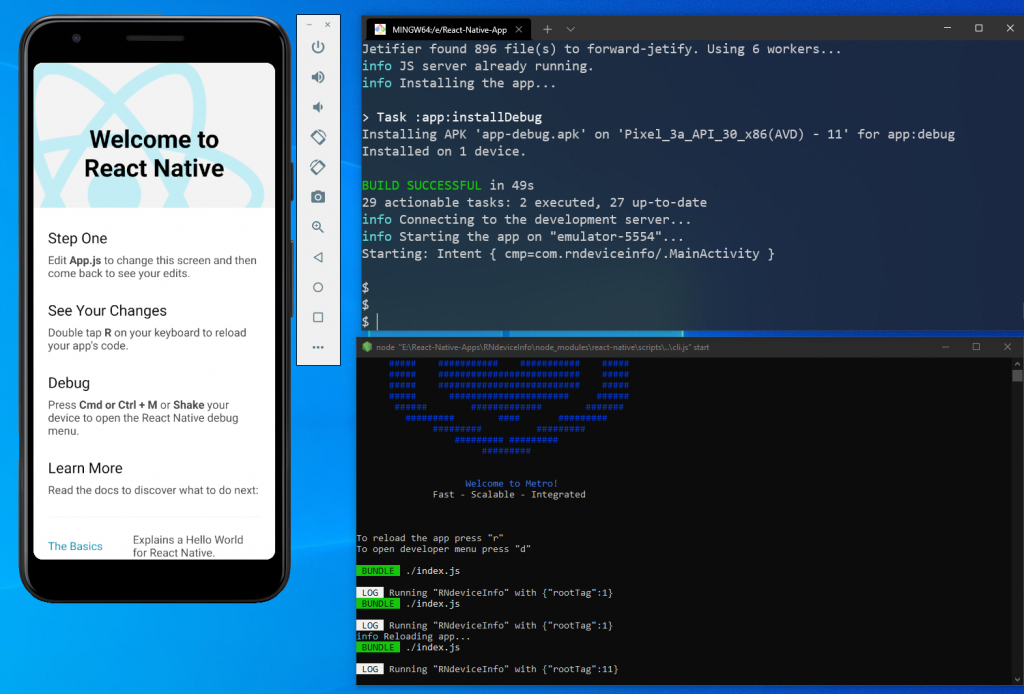
Initial Code Setup
As mentioned earlier, we’ll use the react-native-device-info package for our project. So open your terminal and add the package using the following command:
Next, we’ll open the code in Visual Studio Code and create a folder called pages in the root directory. Inside the pages folder, create two files: DeviceInfoOne.js and DeviceInfoTwo.js. Both these files contain the basic skeleton code as of now.
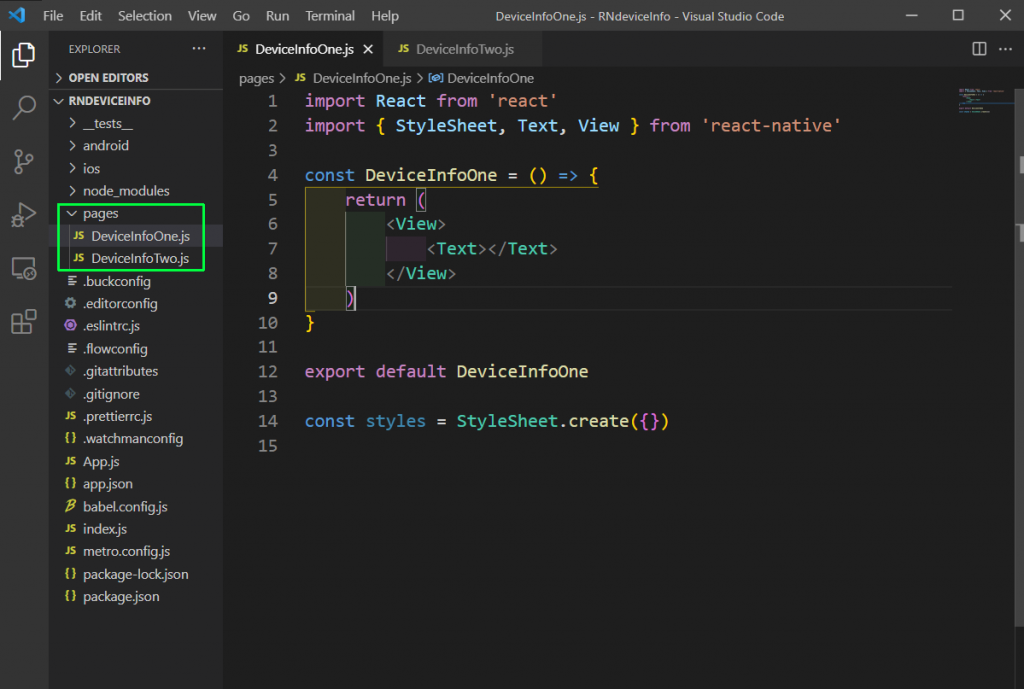
App Component
We’ll first start with the app component, where we need to remove all the earlier code. Add the below code in the App.js file, where we’ll first import the required dependencies. After that, inside the app function, we’ll set the state for the active tab using the useState hook.
We have a SafeAreView with styles, which shows the component DeviceInfoOne or DeviceInfoTwo, based on the activeTab state.
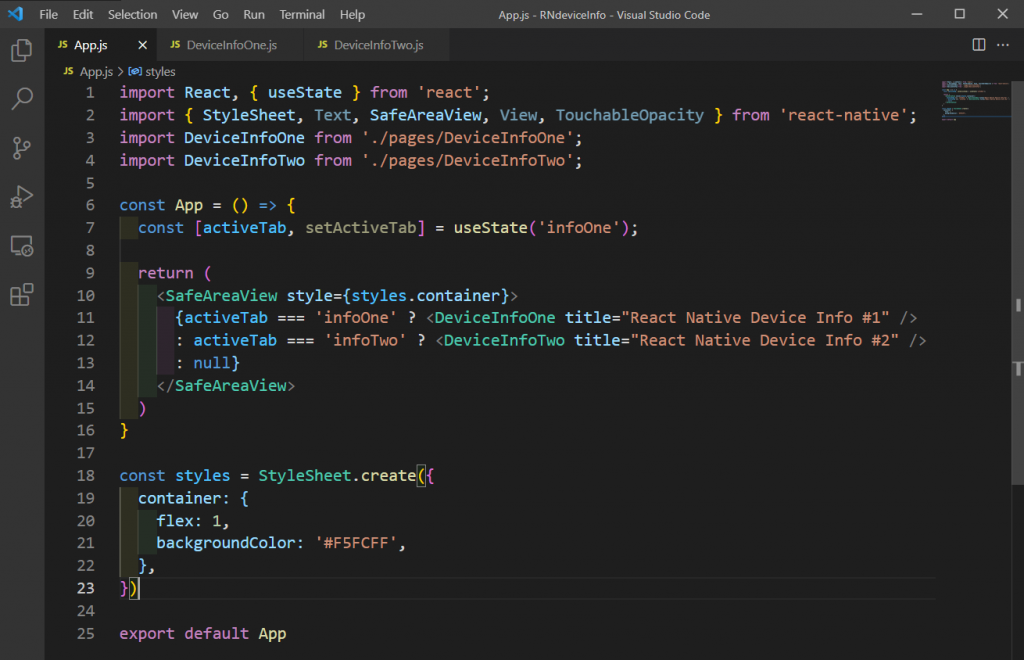
Next, we’ll add a tab bar inside our SafeAreaView. It will contain two TouchableOpacity elements with text in them. Notice that we’re changing the activeTab state based on the click of the tab. So, with this logic, the component DeviceInfoOne or DeviceInfoTwo will be opened.
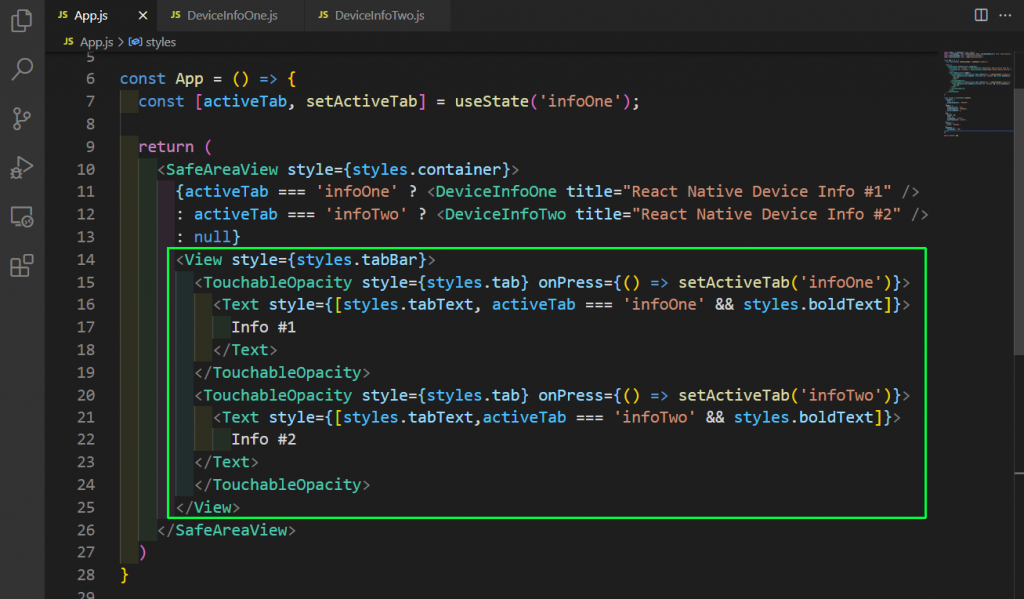
DeviceInfoOne Component
In the file DeviceInfoOne.js, we’ll add the content to show various device info. We’re first doing the required imports, which include various functions from react-native-device-info.
Inside the function, we’ll create an empty object deviceJSON. Next, we’ll add a key as per item and store the value from the imported function. Inside the return statement, we’re showing the deviceJSON with the help of JSON.stringify().
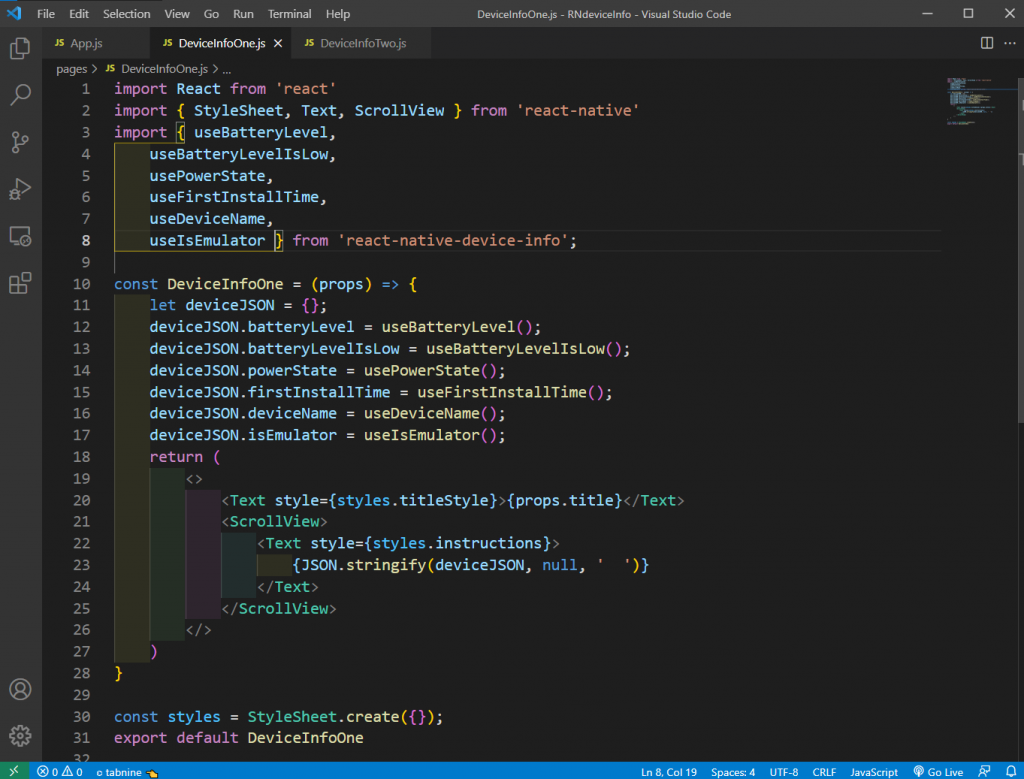
We’ll learn about all these functions next. But before that, let’s add some styles for this component.
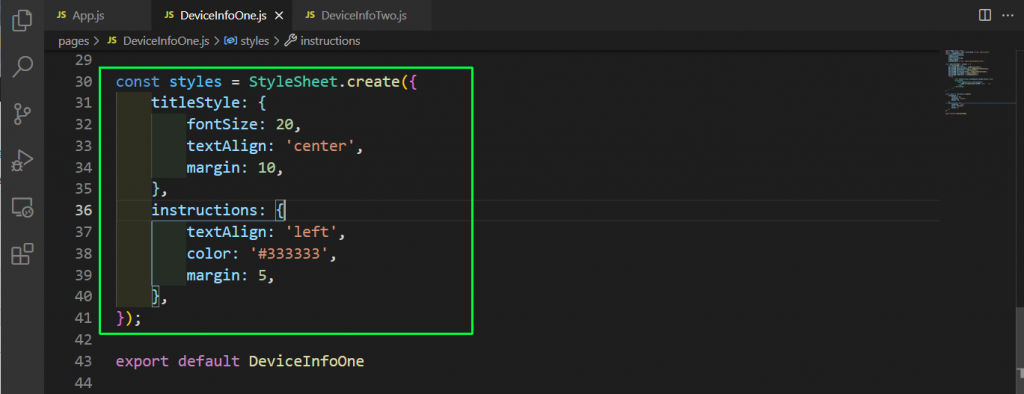
Now, our app will display this data.
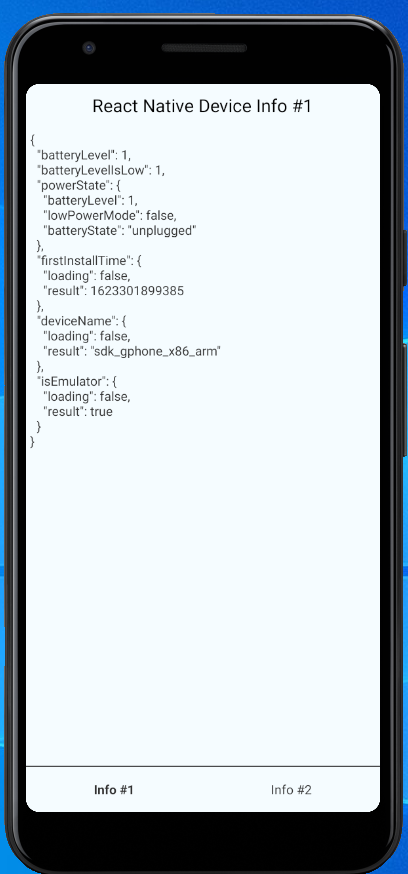
Now, we’ll learn what each of these functions means. All of these can be fired from the user device and sent back for analysis. In our case, we’re just showing them as JSON on the screen.
- useBatteryLevel: Shows us the battery level. When the battery level changes, it gets fired.
- useBatteryLevelIsLow: Fired when the battery level is very low.
- usePowerState: Fired when the battery state is changed from charging mode to unplugged.
- useFirstInstallTime: Shows the time in which the app was first installed in milliseconds.
- useDeviceName: Shows the device name, which is sdk_gphone_x86_arm in our case.
- useIsEmulator: Shows whether the application is running on an emulator. It is true in our case.
More React Native Device Info
Next, we’ll add more device information in our DeviceInfoOne.js file. For this, we have to import DeviceInfo from react-native-device-info first. We’ll then call the functions directly with DeviceInfo.

We’ll get the new device information on our emulator.
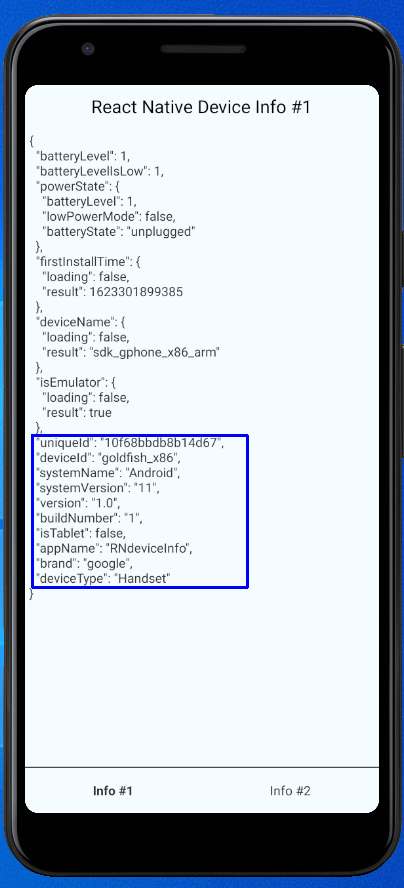
Now, let’s go over what each of these functions means.
- getUniqueId: Returns the device’s unique ID.
- getDeviceId: Returns the device ID, which is goldfish in the case of Android.
- getSystemName: Returns the device’s operating system name. It’s Android in our case.
- getSystemVersion: Returns the operating system version. It’s Android 11 in our case.
- getVersion: Returns the application version. It’s 1 in the case of Android.
- getBuildNumber: Returns the application build number. It’s 1 in our case.
- isTablet: Tells us if a device is a tablet. This is false in our case.
- getApplicationName: Returns the application name. It’s RNdeviceInfo in our case.
- getBrand: Returns the brand name of the device. It’s Google in our case.
- getDeviceType: Returns the type of the device. The possible values are tablet, handset, TV, desktop, and unknown. It’s handset in our case.
DeviceInfoTwo Component
Next, in the file DeviceInfoTwo.js, we’ll add more content to show various device info. We’re first doing the required imports, which include various functions from react-native-device-info.
Inside the function, we’ll create an empty object deviceJSON. Next, we’ll add a key as per item and store the value from the imported function. Inside the return statement, we’re showing the deviceJSON with the help of JSON.stringify().

Next, we’ll add some styles for this component in StyleSheet.
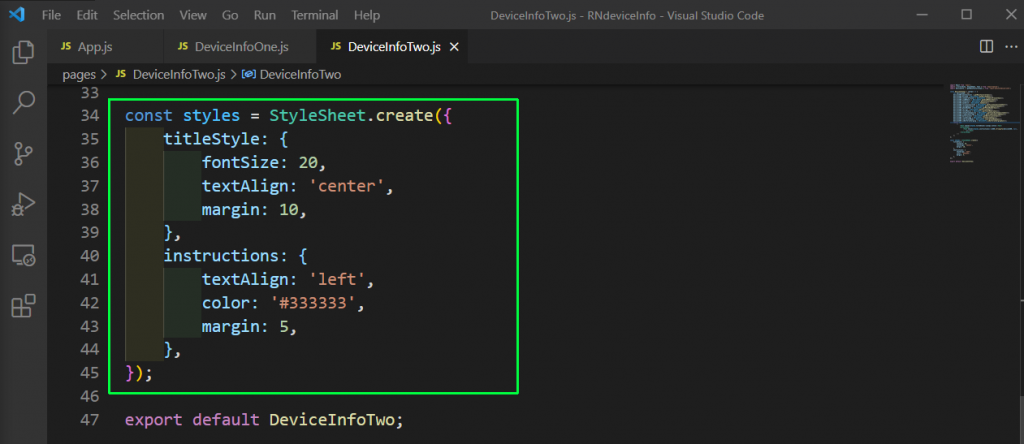
Now, our app will display this data.
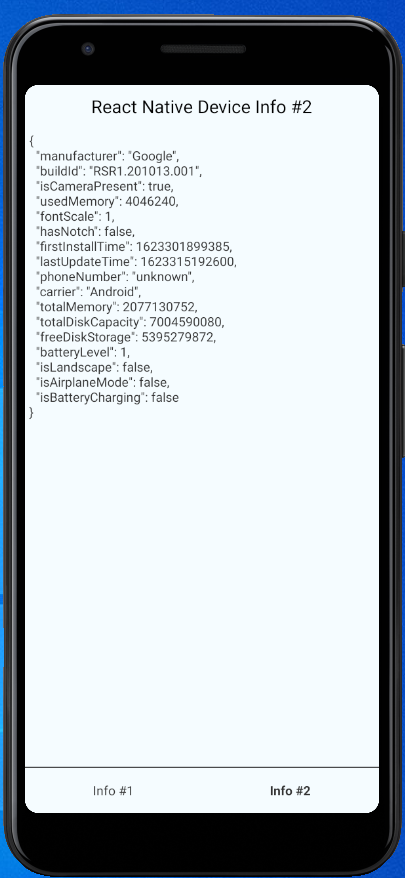
Device Information
Now, we’ll learn what each of the functions means in the file DeviceInfoTwo.js. But note that most of the functions here have Sync at the end, which means they can operate synchronously. For example, you can call isCameraPresentSync() during your app’s start-up to avoid an async call.
- getManufacturerSync: Returns the device manufacturer. It’s Google in our case.
- getBuildIdSync: Returns the build number of the operating system.
- isCameraPresentSync: Tells us whether the device has a camera available.
- getUsedMemorySync: Returns the app’s used memory, in bytes.
- getFontScaleSync: Returns the font scale. Suppose the system font is 10px and the current font is 15px. Then it will return 1.5.
- hasNotch: Tells us whether the device has a notch.
- getFirstInstallTimeSync: Returns the time when the app was first installed. This will be in milliseconds.
- getLastUpdateTimeSync: Returns the time when the app was last updated. This will also be in milliseconds.
- getPhoneNumberSync: Returns the device’s phone number.
- getCarrierSync: Returns the network operator or carrier name.
- getTotalMemorySync: Returns the device’s total memory, in bytes.
- getTotalDiskCapacitySync: Returns the full disk storage size, in bytes.
- getFreeDiskStorageSync: Returns the available disk storage size, in bytes.
- getBatteryLevelSync: Returns the battery level of the device. Its value is in the 0 to 1 range.
- isLandscapeSync: Tells us whether the device is in landscape mode.
- isAirplaneModeSync: Tells us whether the device is in airplane mode.
- isBatteryChargingSync: Tells us whether the battery is currently charging.
Building the App
In order to build the app, we’ll need the APK file to deploy it in the respective app stores as well as for testing with Waldo in the next section. We’ll be looking into the steps to create an APK file for the Android store. The process is a bit different than what we do in Expo. We’ll be following the best practices from this official doc.
First, we need to generate a signing key using the keytool in Windows. This tool is in the JDK directory of the computer. When we run the keytool command, it will ask us some questions, as seen in the image below. We’ll need to remember the password we have entered, as it will be required soon.
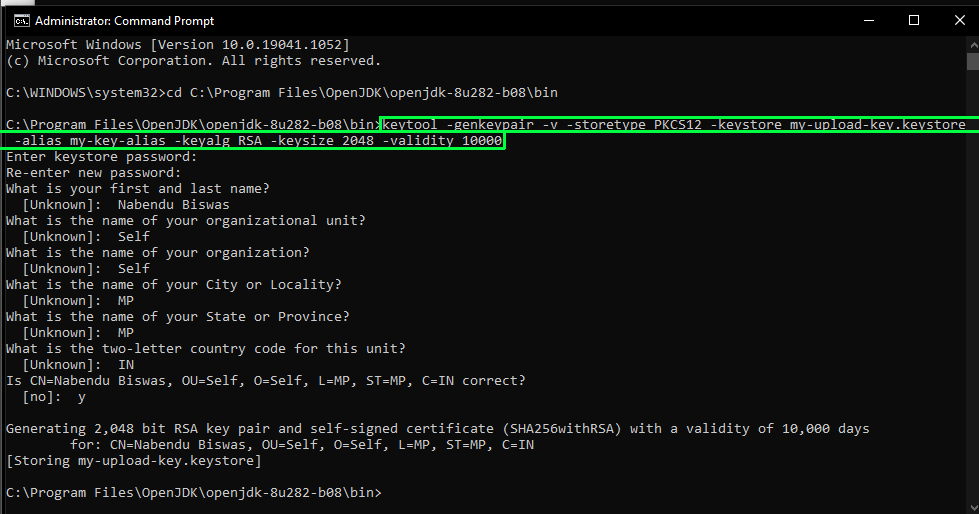
Once the above command is complete, we’ll get a file my-upload-key.keystore in the same directory. We need to copy this file and put it in the android/app folder of our application.

In the file gradle.properties, which is inside the android folder, we need to add the below variables. The password should be the same one we gave earlier.
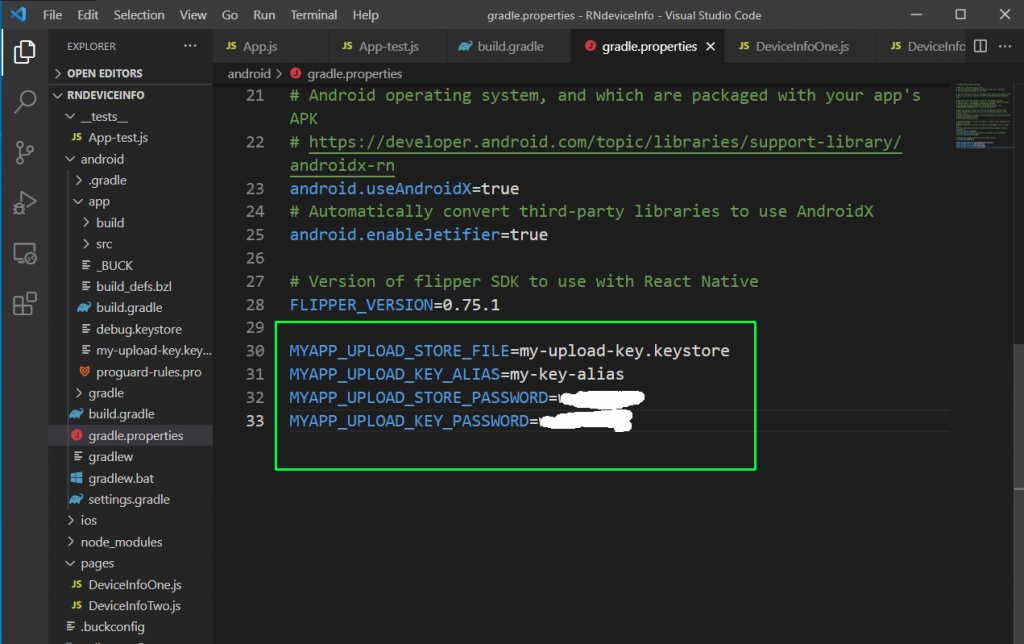
We also need to update the build.gradle file in the android/app folder. In this file, we’ll add the signing configs.
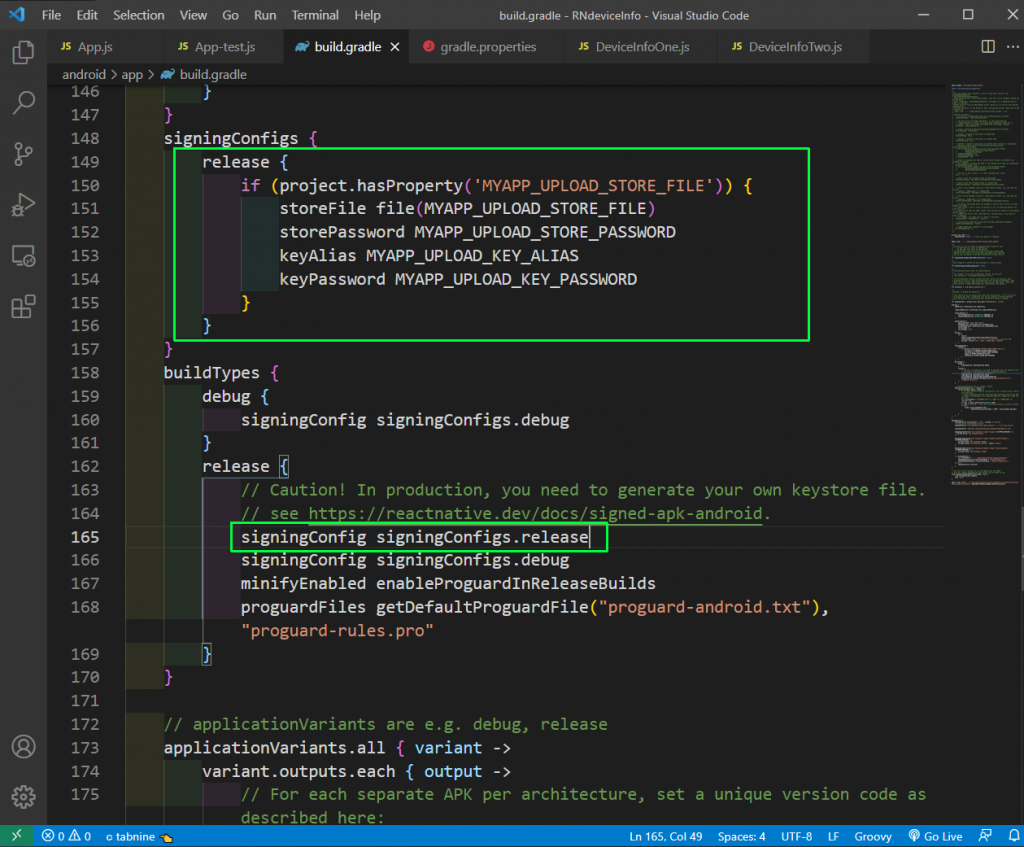
After that, run the command ./gradlew bundleRelease from the android folder to generate the APK file.

The APK file will be generated in the RNdeviceInfo\android\app\build\outputs\apk\debug folder.
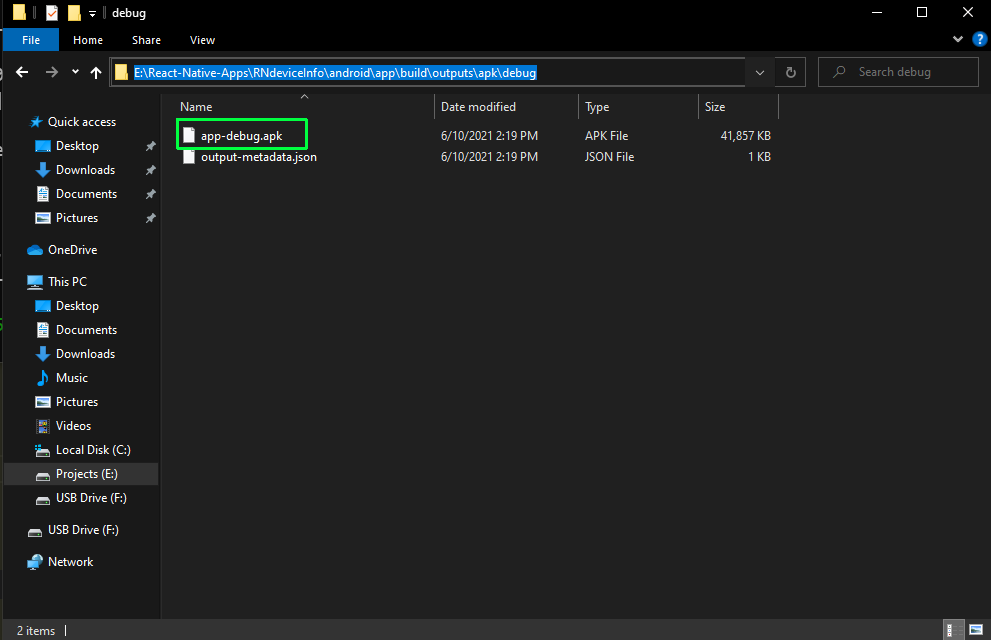
No-Code Testing
To test our application, we’ll use Waldo’s no-code testing tool. We’ll need the APK file from the previous step.
First, create a free Waldo account using your business email, as personal emails are not allowed.
Next, upload the APK file from the previous step. If we have an earlier build already in Waldo, then we’ll need to click the + icon and then “Upload a new build” in the drop-down menu.
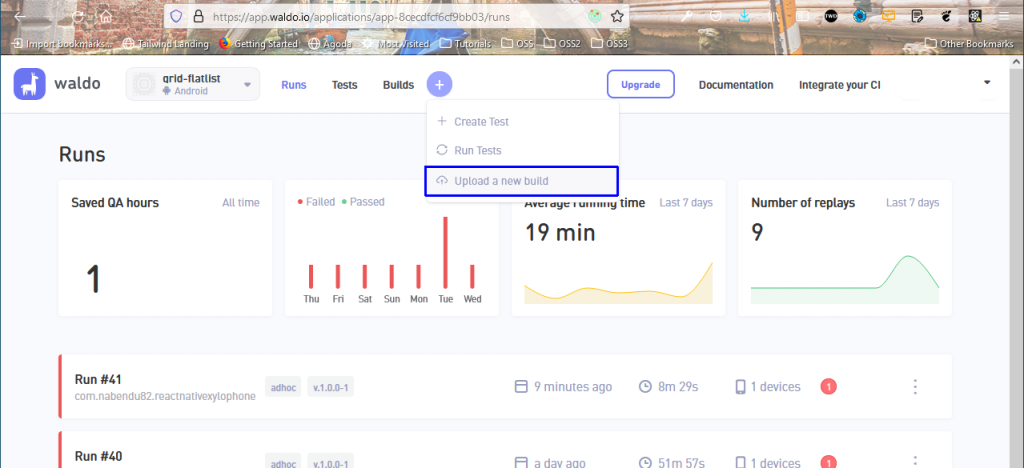
On the next screen, we’ll get a pop-up. Here, we’ll need to upload our APK file, which will take two to three minutes to upload. It will also do verification of the APK file after the upload.
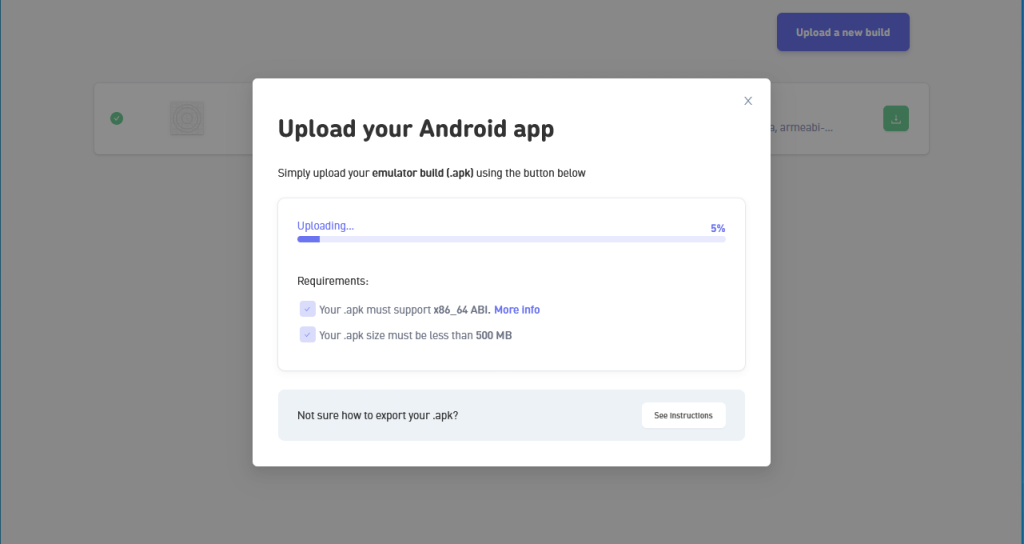
On the next screen, we’ll see our build. We need to click on the build created by this upload.

Now, we have to test our app by interacting with it. Interact with the app as if you’re interacting with any other app on your phone. More interactions will generate better test cases. Once we’re done, click on the “Save test” button, and our test will be run.

Conclusion
In this post, we’ve learned about the various ways to get device information. We got device information easily through the react-native-device-info library.
We also learned to create APK files in React Native and how to do testing with Waldo’s no-code tool.
If you’re looking for an easy, codeless way to test your applications, you can give Waldo a try for free.
Automated E2E tests for your mobile app
Get true E2E testing in minutes, not months.










